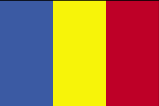|
Chad
|

|
Capital: N'Djamena
Population: 15,946,876
Brief History of Chad:
Archeologists believe that the northern area of Chad was settled as long ago as 6000 BC. There are archaeological sites in the Borkou, Ennedi, and Tibesti areas that date back to 2000 BC. The earliest civilization was the Sao. The Sao were overtaken later by the Kanem Empire. The Kanem was the strongest of the empires formed in Chad.
Europeans arrived in Chad in the late 1800's and the French began to take control in the early 1900's. In 1920 the French took full control and made Chad part of the French Equatorial Africa, also called the AEF. Chad remained a territory for some years until it gained independence on August 11, 1960. The first president of Chad was Francois Tombalvaye, who was lead of the main political party, the PPT.
Unfortunately, the history of Chad has since been marred by constant civil war and rebellion.
The Geography of Chad
Total Size: 1,284,000 square km
Size Comparison: slightly more than three times the size of California
Geographical Coordinates: 15 00 N, 19 00 E
World Region or Continent: Africa
General Terrain: broad, arid plains in center, desert in north, mountains in northwest, lowlands in south
Geographical Low Point: Djourab Depression 160 m
Geographical High Point: Emi Koussi 3,415 m
Climate: tropical in south, desert in north
Major cities: N'DJAMENA (capital) 808,000 (2009), Moundou, Sarh
The People of Chad
Type of Government: republic
Languages Spoken: French (official), Arabic (official), Sara (in south), more than 120 different languages and dialects
Independence: 11 August 1960 (from France)
National Holiday: Independence Day, 11 August (1960)
Nationality: Chadian(s)
Religions: Muslim 51%, Christian 35%, animist 7%, other 7%
National Symbol: goat (north); lion (south)
National Anthem or Song: La Tchadienne (The Chadian)
Economy of Chad
Major Industries: oil, cotton textiles, meatpacking, beer brewing, natron (sodium carbonate), soap, cigarettes, construction materials
Agricultural Products: cotton, sorghum, millet, peanuts, rice, potatoes, manioc (tapioca); cattle, sheep, goats, camels
Natural Resources: petroleum, uranium, natron, kaolin, fish (Lake Chad), gold, limestone, sand and gravel, salt
Major Exports: cotton, cattle, gum arabic, oil
Major Imports: machinery and transportation equipment, industrial goods, foodstuffs, textiles
Currency: Communaute Financiere Africaine franc (XAF); note - responsible authority is the Bank of the Central
National GDP: $19,560,000,000
** Source for population (2012 est.) and GDP (2011 est.) is CIA World Factbook.
Back to Geography Home Page
